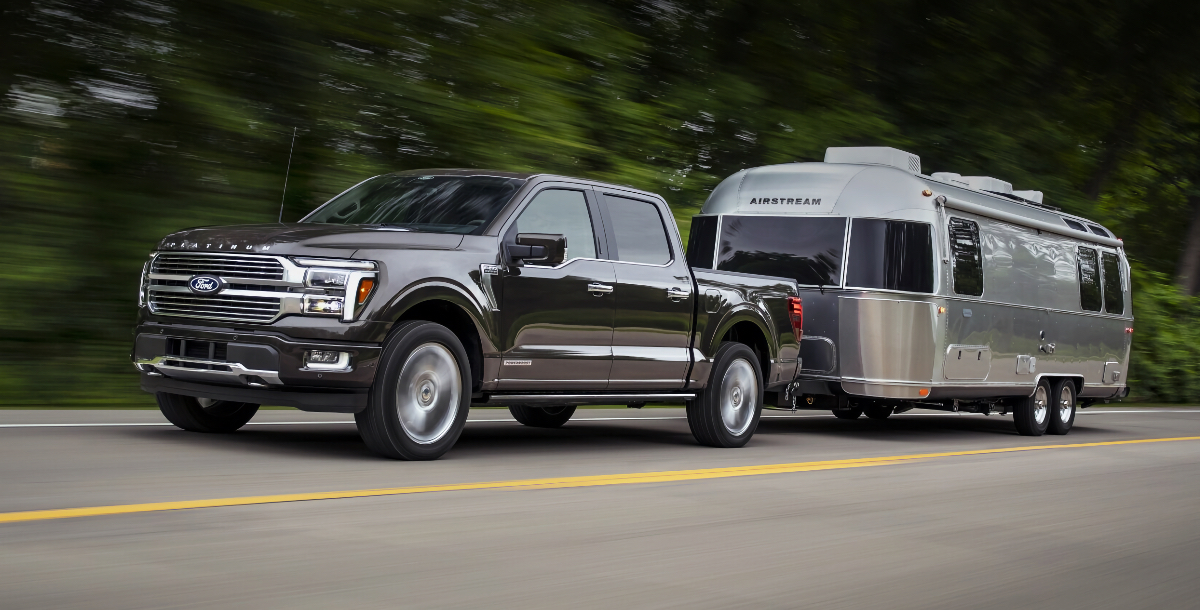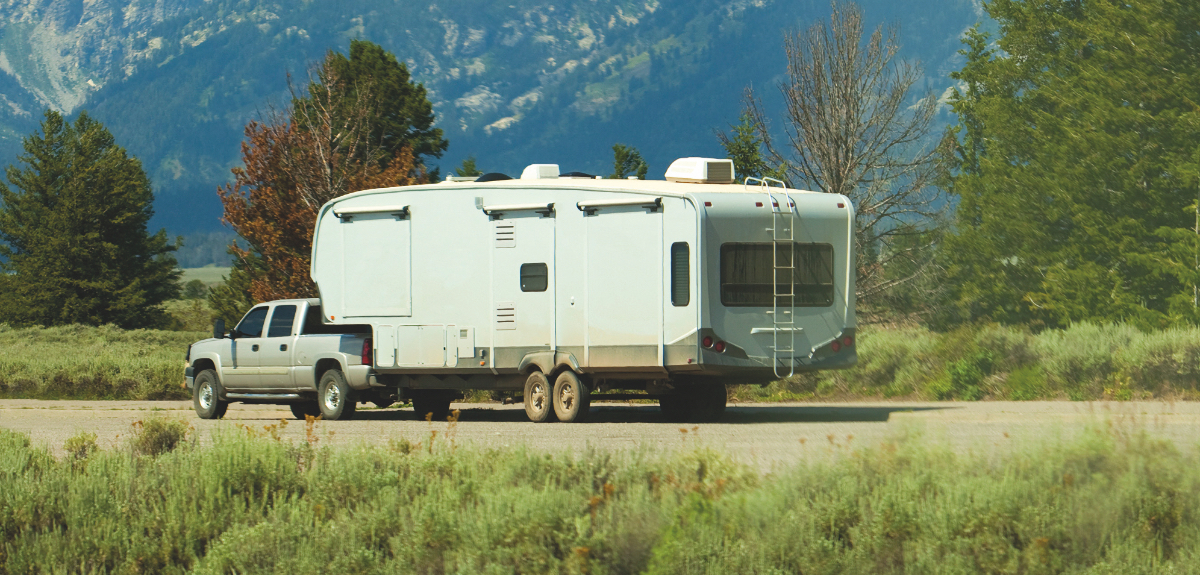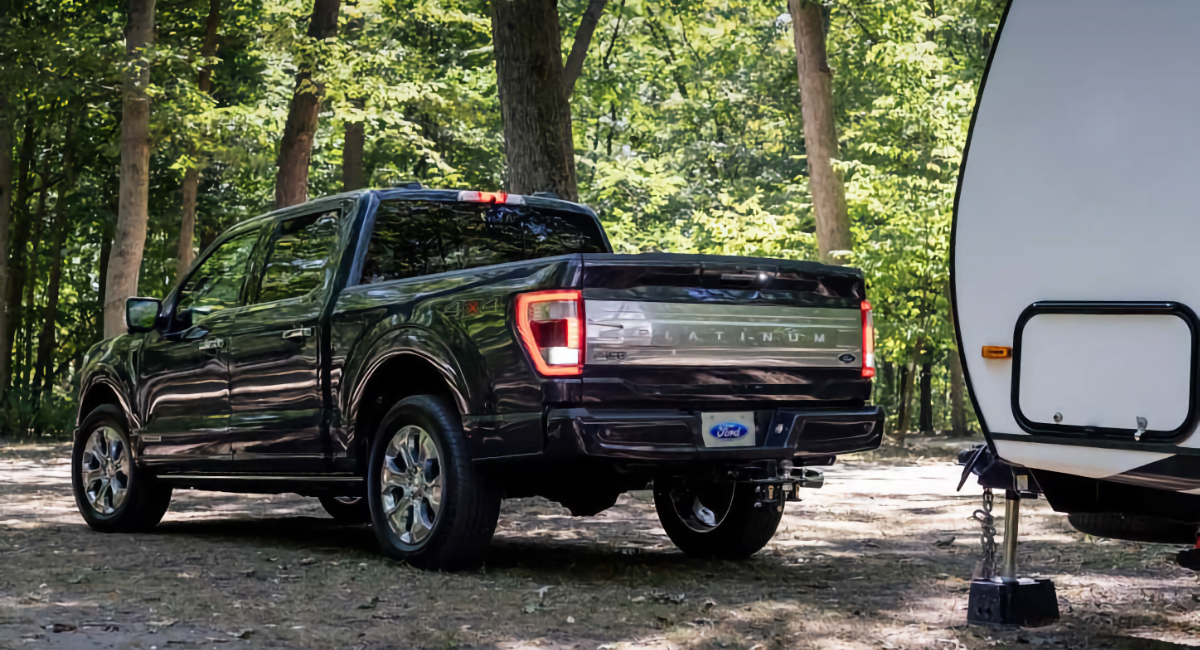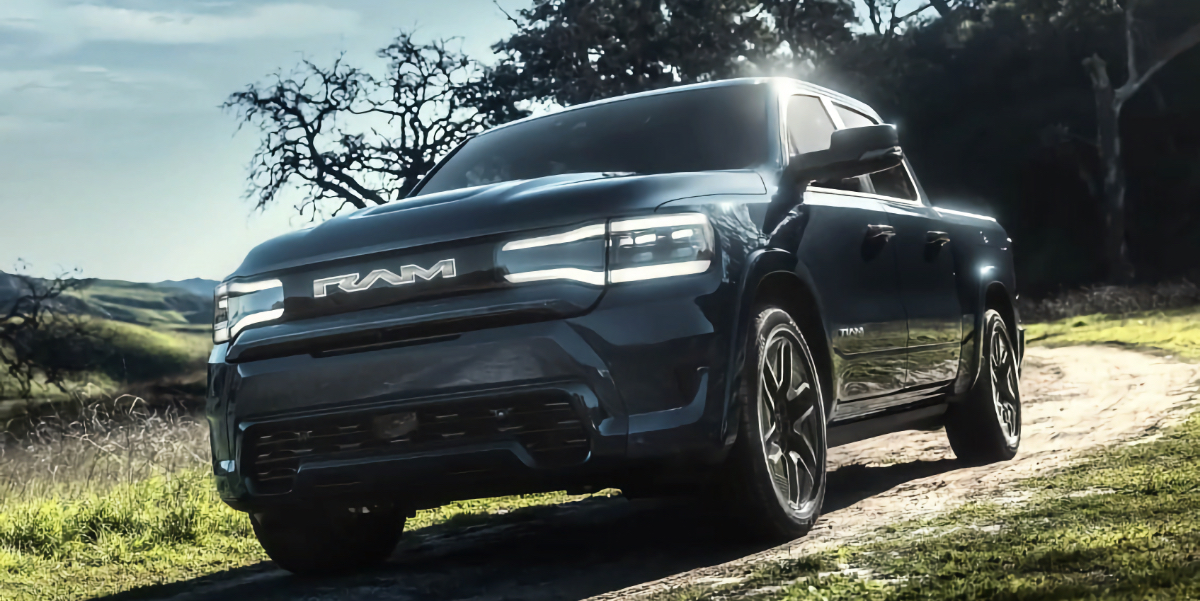How to Tow A Trailer
Image Caption:
Towing a Trailer Safely
Towing a travel trailer or fifth wheel is a skill that just about any driver can master. It isn’t difficult, but it does require a different thought process from driving an ordinary passenger vehicle.
Size Matters When Towing a Trailer
When moving up from a single vehicle to a combination vehicle, such as a truck and trailer, the most obvious difference is mass. An RV is taller, wider, longer and heavier than a passenger car, and because of that, the driver must learn to anticipate traffic and road conditions sooner.
Start by paying closer attention to the driving environment and trying to predict what other drivers are going to do. Is traffic merging up ahead? Are drivers swerving around slower vehicles? Look carefully when changing lanes, signal early and allow room to maneuver out of potentially difficult situations.
In addition to having more mass than a passenger car, a tow-vehicle-and-trailer combination generally has a higher profile, making it vulnerable to sway caused by cross- winds and turbulence created by passing trucks and other large vehicles. Slowing down, keeping a distance from large vehicles and having the right hitch equipment, properly adjusted, can reduce these effects.
Know Your Own Dimensions
Knowing the height of your RV, and adding a few inches for safety, is essential. Some RVers post that number where it can be seen from the driver’s seat. When driving and backing, watch for overhead obstructions, including tree branches and building overhangs. Be aware that low-clearance bridges and overpasses are more common in some parts of the country, particularly on older roads.
Knowing the RV’s width is also important, particularly when negotiating narrow roads, turns and obstructions. Many trailers and fifth-wheels push the legal width requirement of 81⁄2 feet. Extendable side mirrors or add-on towing mirrors are a must.
Most people don’t pay much attention to the weight of a passenger car, but when they move up to an RV, weight becomes an important consideration. It’s critical to avoid overloading, which can cause adverse handling and excessive wear to various components. Overloaded tires can blow out, brakes can fade or fail, and structural components can break, which can all lead to loss of vehicle control. Staying within the engineering limits of your vehicle is the best way to prevent this from happening.
Take it Slow and Anticipate Stops
Because of the additional mass, it takes longer for a tow vehicle and trailer to stop. Increasing following distance behind other vehicles, reducing speed and applying the brakes sooner contribute to safer stopping.
The best way to keep track of weight is to weigh the RV on a truck scale while fully loaded for a trip. These weights can be used to stay within gross vehicle and axle limits and determine if the RV can be driven on weight-restricted roads and bridges.
Practice Towing In a Safe Space
To get a feel for how the combination of a tow vehicle and trailer handles — especially if you are new to trailering — take the RV to a large, empty parking lot and practice driving. Keep nearby objects in mind when making turns and backing up, and take your time to avoid hitting obstructions. Try not to curb the tires, as this can lead to tire failures more easily than with cars because of the heavier weight.
Backing a trailer can be a challenge, depending on the environment and the size of the trailer, but it’s a skill that isn’t difficult to learn. Use the parking spaces as targets when practicing. Some people find it helpful to steer one-handed, with the hand placed at the bottom of the steering wheel to direct the trailer. Then the steering wheel is simply turned to the right to back right, and vice versa. Practice makes perfect.
Before backing up, particularly into a tight campsite, examine the area closely to make sure there’s enough room to maneuver. Be aware of trees, branches, signs and other vehicles. Don’t forget picnic tables; move them out of the way before backing into a site. Take note of the hookup location and park in such a way to make the necessary connections, including running a dump hose to the sewer inlet.
When backing into a campsite or a parking space, it’s best to pull past the intended spot and position the trailer at an oblique angle to make the reverse turn into the space less severe. Try to predict how the trailer will move. Use a spotter and a means to communicate. Portable two-way radios and cell phones (hands-free, of course) are ideal for communicating with a spotter. Common hand signals are also a good way for the spotter to let the driver know which way to maneuver; just make sure the driver can see the spotter.
Turning and backing a travel trailer differ from maneuvering a fifth-wheel. Travel trailers turn tighter, while fifth-wheels track to the outside when making turns. Travel trailers also respond more quickly when backing.
Vehicle Setup and Braking
Proper tow vehicle and trailer setup is essential for a good towing experience. When possible, select the trailer or fifth-wheel before buying the tow vehicle. That way, you won’t fall into the trap of towing with a vehicle that isn’t suitable for the RV, although a shady salesperson could try to steer you toward a vehicle that’s not suitable for towing the trailer you have. If you already have the tow vehicle, don’t buy more trailer than it can safely tow. Never exceed the maximum tow rating for any vehicle.
Get the Tow Package
When buying a tow vehicle, it’s best to opt for the proper towing package from the factory. If the vehicle is not factory-equipped for towing, the dealer can help integrate the proper components. Don’t skimp here. Good-quality hitch equipment, whether for a travel trailer or fifth-wheel, will make the towing experience safer and more enjoyable.
Test your Brake Controller
Almost all towable RVs come with electric brakes. These utilize an electromagnet that is attracted to an armature that moves the brake shoes so they press against the inner diameter of a brake drum on each wheel. To activate the brakes, a built-in or add-on electric brake controller is used to meter the amount of power applied to the brakes. A breakaway switch tethered to a cable that is attached to the tow vehicle activates the trailer’s brakes in the event of a trailer separation.
Adjusting the trailer-brake controller is important, and it’s fairly simple to do. Carefully follow the instructions in the vehicle’s owner’s manual or provided with the add-on controller. The basic idea is to set the controller so that the trailer “tugs” on the tow vehicle without locking the brakes.
A common method of testing this is to tow the trailer on a paved surface at about 25 mph and fully apply the brakes using the brake control’s manual activation lever. If the wheels lock up, then the setting is too aggressive and needs to be adjusted. If you can’t feel the trailer, then increasing the power is in order. Remember that it may be necessary to readjust the setting on the brake controller depending on trailer loading, because weight will affect braking efficiency.
What to Do When the Trailer Sways
Trailer brakes can also act as an anti-sway device when lateral movement (yaw) affects towing stability. During a sway episode, don’t hit the brake pedal. Instead, lift your foot off the accelerator and engage the trailer-brake activation lever on the brake controller. Activating the trailer brakes will allow the trailer to move back to center and arrest the sway condition. Sway is usually more noticeable with travel trailers than with fifth-wheels, but it can happen with both.
What is Brake Fade and How to Avoid It
Riding the tow vehicle’s brakes while driving downhill can cause them to overheat and fade. As the brakes heat up, their effectiveness is reduced until they cool off. This is called brake fade. The best way to avoid this situation is to slow down and downshift the transmission, which increases the engine’s rpm and slows the vehicle without excessive braking. Most newer pickups have tow modes built into their transmissions that help with compression braking. Later-model trucks with diesel engines are equipped with an exhaust-brake feature that is very effective and helps limit the overuse of service brakes.
Why Towing Shouldn’t Scare You
Towing a travel trailer or fifth-wheel is one of the best ways to see all the great things North America has to offer. With attention to tow vehicle and hitch selection and setup, and some practice with proper driving techniques, your towing adventures will be more enjoyable and hassle free.
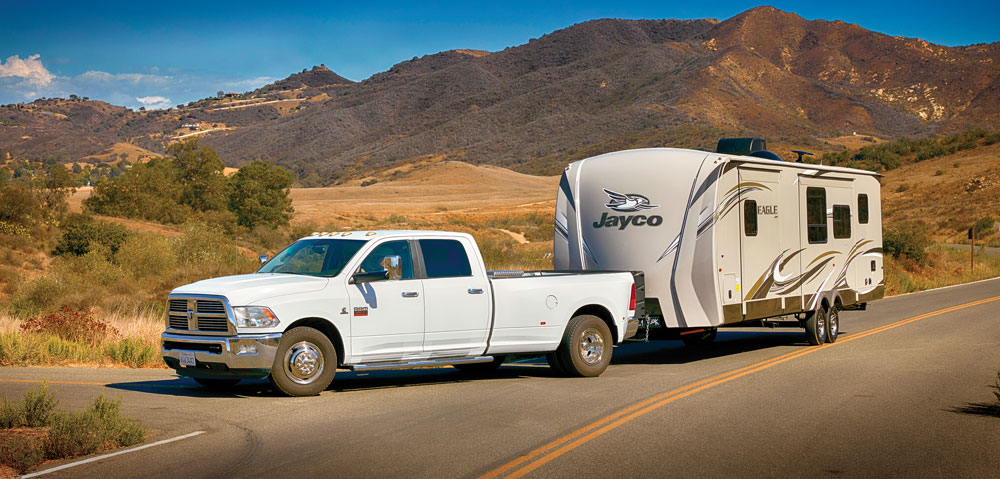
Towing Checklists
Step by Step Towing Checklist for Travel Trailers
1. Chock the trailer tires.
2. Insert ball mount into tow vehicle’s hitch receiver and secure it with the proper hitch pin or locking hitch pin.
3. Inspect and lube the hitch ball and ends of weight-distributing bars, if necessary/applicable.
4. Raise the trailer coupler high enough to clear the hitch ball.
5. Back the tow vehicle to the trailer’s A-frame with the aid of a helper or rearview-camera system and stop when the hitch ball is directly under the trailer’s coupler. For safety, be sure to set the tow vehicle’s emergency brake after positioning the hitch ball under the coupler.
6. Lower the trailer’s coupler onto the hitch ball, secure the coupler latch and use a pin to lock in place.
7. Using the A-frame jack, raise the front of the trailer and rear of the tow vehicle several inches. This will allow the spring bars to be installed without excessive tension.
8. Install the spring bars into the correct position. Use a lifting tube to cinch the spring bars and do not release pressure on the bar until the spring-bar bracket is locked in place using the proper pin.
9. Lower the A-frame until the jack foot is off the ground. If the trailer is not level, the spring bars may need to be adjusted. If this is not possible, the ball mount may need adjusting.
10. Hook up the safety chains by crisscrossing below the ball mount and high enough to prevent them from dragging on the pavement. Attach the breakaway switch cable.
11. If equipped, install the sway control.
12. Insert the seven-way electrical cord that supplies power to the trailer’s taillights, brakelights and brakes.
13. Check operation of the taillights, brakelights and turn signals. Be sure the entry step has been stowed in the travel position.
14. Check trailer and tow-vehicle tire pressure and adjust if necessary. Inspect tires for unusual wear or damage.
15. Torque trailer wheel lug nuts to manufacturer’s specifications.
16. Remove wheel chocks and slowly move forward while manually testing the trailer brakes for proper operation.
Step by Step Towing Checklist for Fifth Wheels
1. Chock the fifth-wheel tires.
2. Lower the truck tailgate.
3. Open the jaws on the fifth-wheel hitch and level the top plate. Inspect the hitch and make sure it is lubricated according to the manufacturer’s specifications.
4. Enlist a helper to raise the front of the fifth-wheel until the kingpin is approximately 1 inch below the top of the hitch plate.
5. Slowly, back into the kingpin until the hitch jaws lock securely into place.
6. With the aid of a flashlight, check to make sure that the jaws of the fifth-wheel hitch are closed in the proper position and locked around the kingpin.
7. Plug in the seven-way electrical cord and the breakaway switch cable.
8. Check operation of the taillights, brakelights and turn signals. Be sure that the entry step has been put in the travel position.
9. Securely close the truck tailgate.
10. Inspect the fifth-wheel and tow-vehicle tires for proper inflation and wear/damage.
11. Torque wheel lug nuts to manufacturer’s specifications.
12. Raise the landing jacks approximately 1 to 2 inches off the ground. Remove the wheel chocks and slowly move forward while manually testing the trailer brake function. If the hitch is secure, fully retract the landing jacks.

